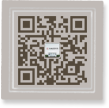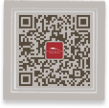Passion Cast in Chinese Ink and Brush- an Exhibition of Paintings by Wu Bangsheng
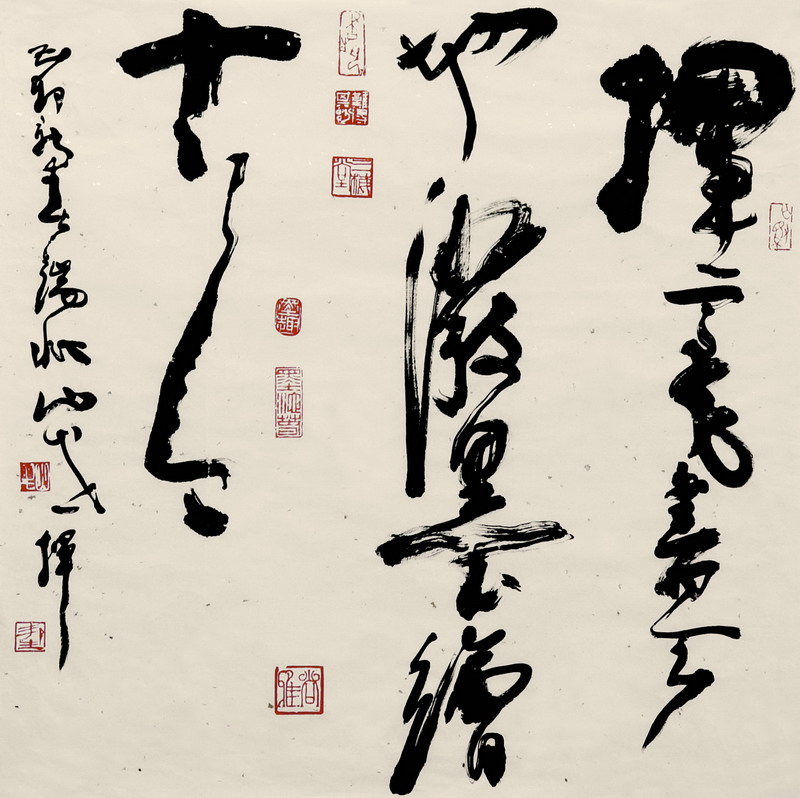
Introduction
Passion Cast in Chinese Ink and Brush- an Exhibition of Paintings by Wu Bangsheng
Passion Cast in Chinese Ink and Brush- an Exhibition of Paintings by Wu BangshengBorn in Huaiji County, Guangdong Province in 1935, Wu Bangsheng was a military artist in Guangdong Province since 1950s, during which he created many works that attracted the attentions of the whole art community. And many of his works were collected by Chinese Art Museum and other influential art institutions. Obsessed with painting deer and dances by people, he blazed a trail by himself and explored an art realm of his own. Therefore, many of his works were selected for national art exhibition and were awarded with prizes time and again. In the 1960s when he took office in Hunan Federation of Literary and Art Circles, he played a greatly significant role in promoting the development of art and calligraphy in Hunan Province. In the 1990s, he was then transferred to the City of Zhaoqing in Guangdong Province, and now he serves as the vice president of Zhaoqing Federation of Literary and Art Circles, president of Zhaoqing Artist Association and dean of Zhaoqing Art Academy.
The exhibition presents more than one hundred pieces of works which feature masterpieces of Wu Bangsheng from different periods varying from the earliest in 1973 to the recent one. Wu excels in Chinese figure painting, but also shows interest in drawing deer, dance painting and Chinese calligraphy. His paintings were produced smoothly and full of charm. A few strokes unfold a vivacious deer on a piece of paper and several lines with unique rhythm present a gracefully slender dancer dressed in robes with long and colorful sleeves. The artistic appeal found in his works is deeply rooted in his unremitting exploration for Chinese painting art and the artistic conception, just as the renowned literary theorist Wang Zhaowen once commented on his works: “Bangsheng, in his paintings, lays emphasis on delivering the emotion implied in poems, creating the artistic conception of paintings and presenting the charm contained in Chinese ink.” A Chinese classic teaches that “if calligraphy is finished in the same way as the painting is done, the calligraphy works will also be full of charm.” Likewise, Wu’s calligraphy works, similar to his paintings, strive for the artistic conception, charm and rhythm.
This year, Wu Bangsheng decided to donate 80 pieces of works from his life-long creation to the Hunan Provincial Museum for free. Such a magnanimous act moved all. And this exhibition held by Hunan Provincial Museum aims to not only demonstrate Wu’s achievements in art, but also convey appreciation for his generous donation.
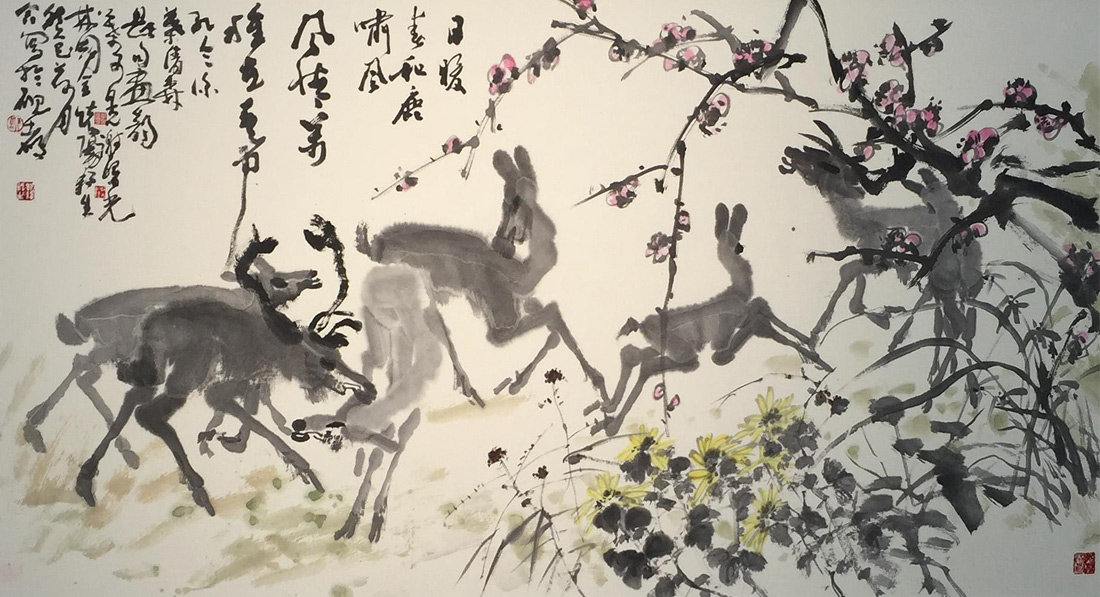
Highlights
- Golden Autumn on Miaoling Mountains
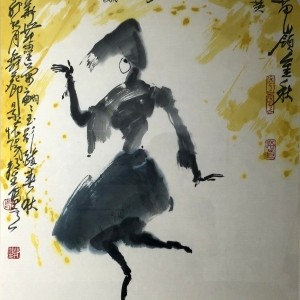
- Grazing Season
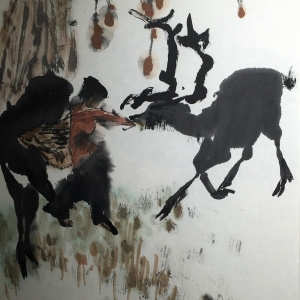
- Mountain Rain
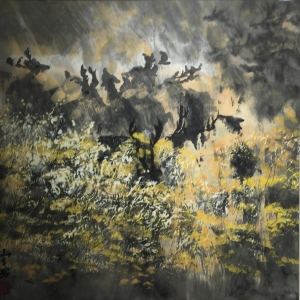
- Charm of Lion
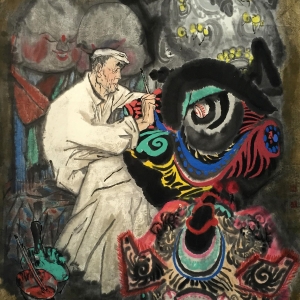
- Inscription by Su Shi, a great poet of Song Dynasty, on Duanxi Ink Stone
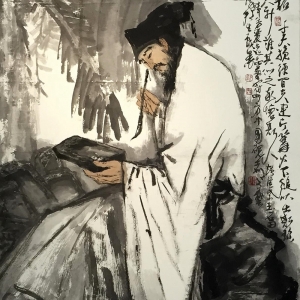
- Inscription by Su Shi, a great poet of Song Dynasty, on Duanxi Ink Stone
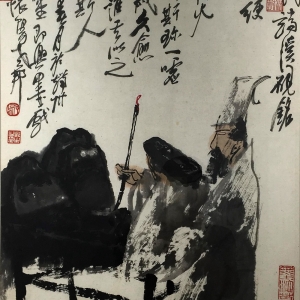
- A Touching Scene of the Cow Gently Licking the Calf
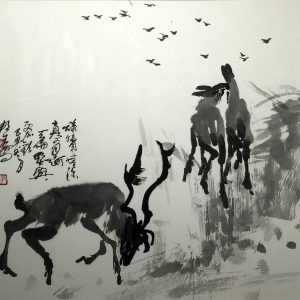
- Frontier Area after the Rain
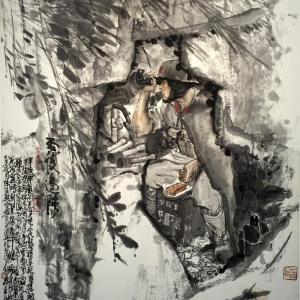
- Festive Lantern Dance on the Lantern Festival
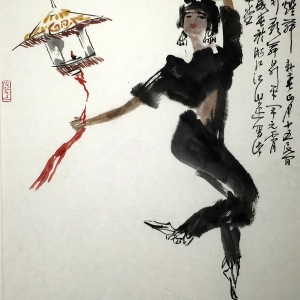
- Indulgence in Spring
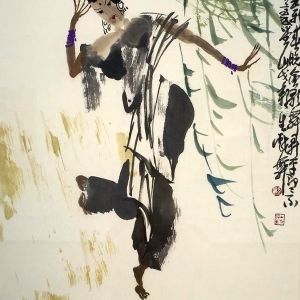
- A Party Branch Built in the Company
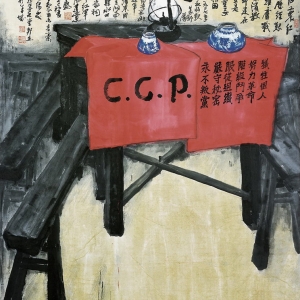
- Eternity Carved into the Stone TipSee More
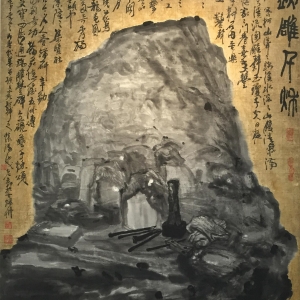
Artist introduction
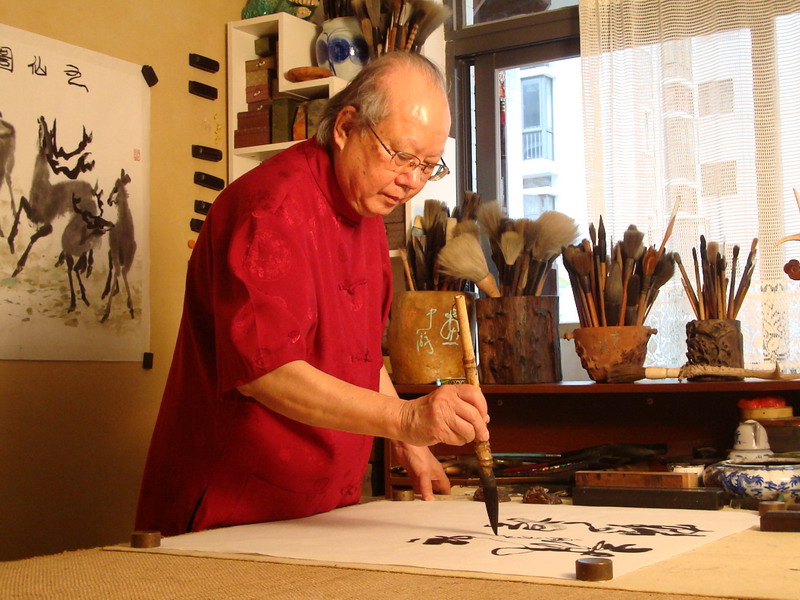
Born in Huaiji County, Guangdong Province in 1935, Wu Bangsheng is a member of China Artists Association, director of Chinese Calligraphers Association, an editorial board member of the Chinese Calligraphy Art Gallery and a national first-class artist. Since 1975, he successively served as the cultural instructor, head of the stage art team and art creation full-time cadre in Guangzhou Military. In 1968, he assumed office as the head of Creative Department of the Hunan Artists Association, being one of the founders of the Hunan Art Academy, Hunan Calligraphers Association and Hunan Jiuge Painting and Calligraphy Academy as well as the first full-time vice president and associate dean. In 1993, he was transferred to Zhaoqing City to serve as the vice president of Zhaoqing Federation of Literary and Art Circles, director of Guangdong Artists Association and Guangdong Calligraphers Association as well as the honorary president and dean of Zhaoqing Artists Association, Zhaoqing Calligraphers Association and Zhaoqing Art Academy.
As one of the famous contemporary Chinese painters and calligraphers, Wu Bang sheng, besides excelling in Chinese figure painting, is well versed in deer and dance painting as well as calligraphy, creating abundant works. His traditional Chinese paintings such as After Class, When Leaving the Village, A Disciplined Role Model, It Is Beneficial to Compare with, Learn from, Keep up with and Help Each Other are collected by Chinese Art Museum. In addition, his works like A Party Branch Was Built in the Company, During a Night Journey across a Village, No Hoof Beat Was ever Heard, Charm of Lion, In the Thunderstorm, Self-written Poems and Calligraphy, comic books including On Sha Tian Road, The Handcuffed Passenger, Three Gorges Goddess and many other masterpieces have been selected to be on display in National Comprehensive Art Exhibitions and National Comprehensive Calligraphy and Seal Exhibitions many times as well as being included and published in The East Is Red, Collected Works of Chinese Art, A Grand View of International Calligraphy Masterpieces and other national large-scale painting albums, and some of his works have been chosen by scenic spots around the country to serve as couplets engraved on the board, inscriptions and murals. In 2012, Wu was selected as one of the 30 Most Academically Valuable Flower-and-bird Painters in contemporary China. In 2013, he was among the first batch of artists in the literary and art circles of Zhaoqing, awarded with the title of Artists Excellent Both in Performing Skills and Moral Integrity by the Propaganda Department of Zhaoqing Municipal Party Committee and Zhaoqing Federation of Literary and Art Circles.
Wu is in endless pursuit of the beauty of artistic conception, composition of a painting and charm of Chinese ink. As well as focusing on Chinese figure painting, he also demonstrates talent in calligraphy and bears fruitful outcomes. Especially in his exploration for deer, dance and ancient poetry paintings, he draws in a sketchy, lively and innovative way, making it all more poetic and full of artistic appeal. When drawing deer, he uses thick ink for horns while light ink for the body, and a few strokes unveils a lively deer on the paper. For dance painting, a smooth stroke produces the figure and another shapes the dress. It only takes a piece of orchestral music for him to unfold a graceful and vivid dancer in robes and flying sleeves. For opera scene, under his brush, different shades of dripping ink are perfectly integrated. When doing ancient poetry painting, he recedes from the mundane life, pretends to be clumsy and conceals wisdom within, of which the artistic conception can be demonstrated by “exotic charm from afar”. His calligraphy is also unique in style, especially his cursive script, which inherits the vigorous and unrestrained manner in Ming Dynasty. He lays emphasis on composition, brushwork and use of ink by applying thick or light shades of ink in an innovative way. His natural and unrestricted strokes give people a feeling of lightness yet with a wisp of thickness, light yet powerful. When he is writing a calligraphy work, he integrates the artistic conception of the painting, adding a peculiar appeal to it. Comparing his calligraphy to his painting, one will immediately finds out that his painting and calligraphy are fused with each other. Obviously, Wu has his own deep understanding about this, which epitomizes why he combines calligraphy with painting for ingenuity and vitality, finally creating an artistic world for himself.


